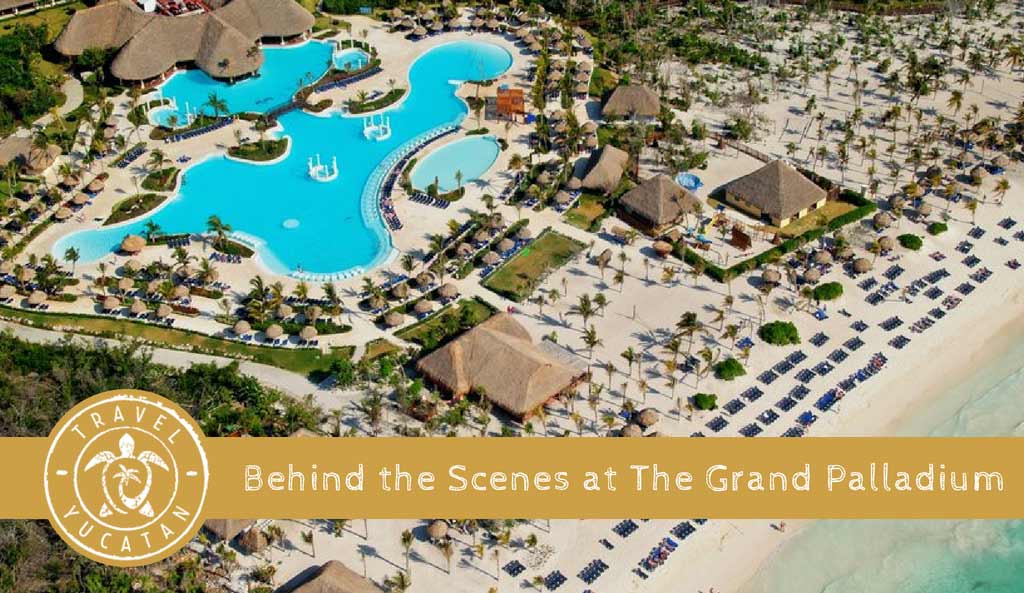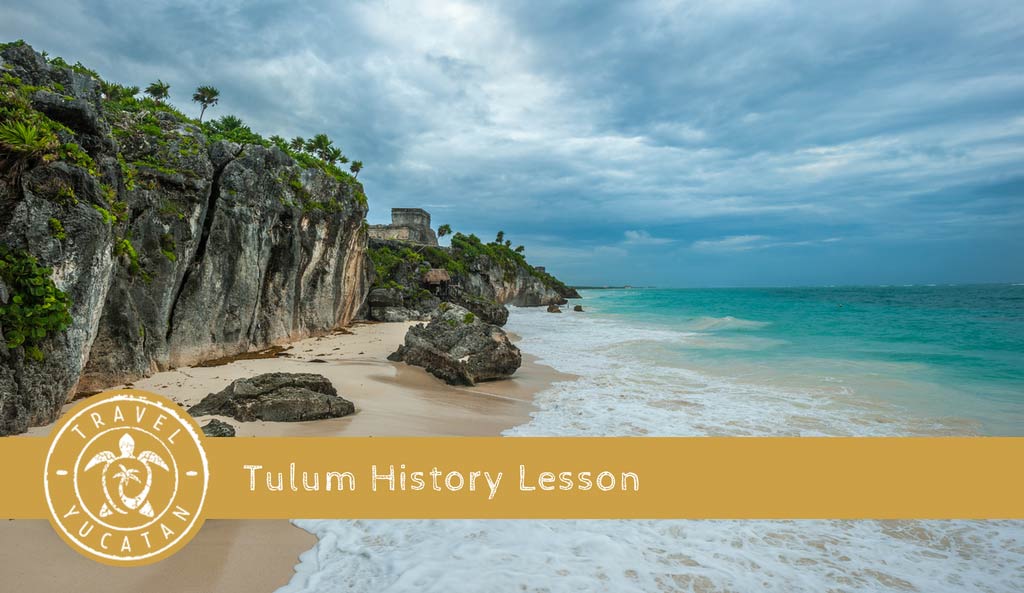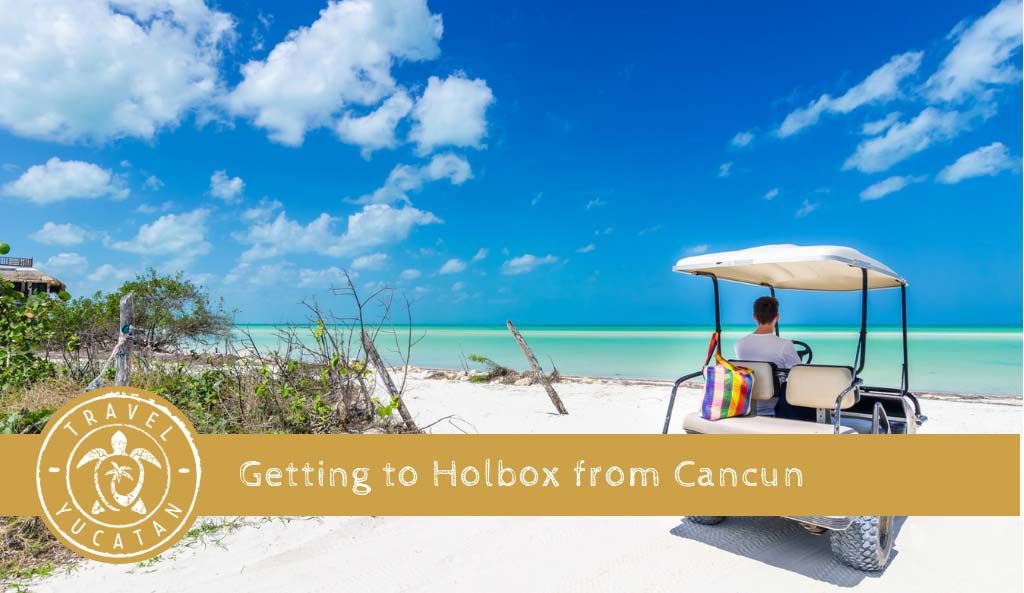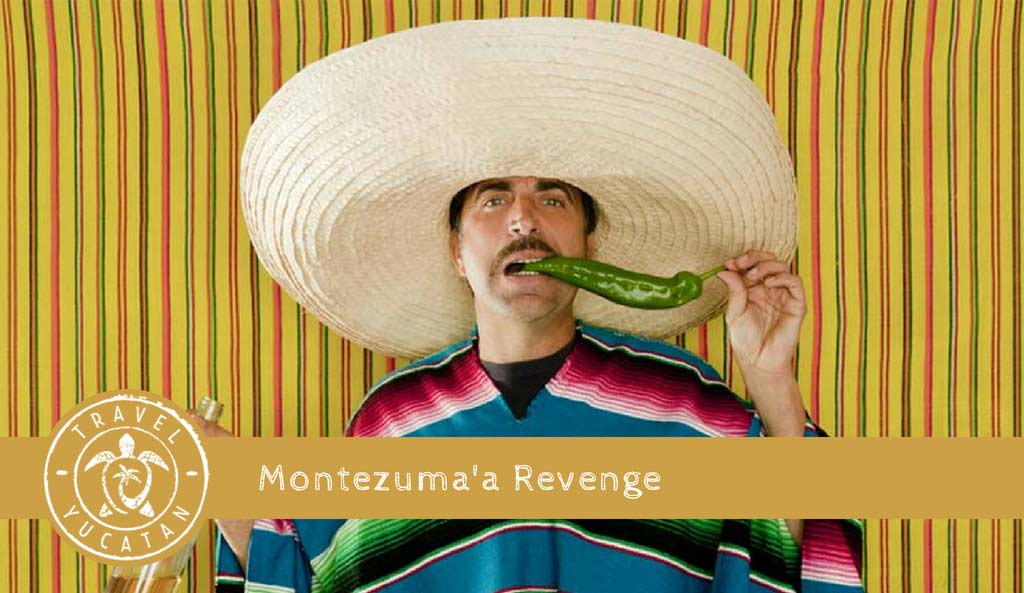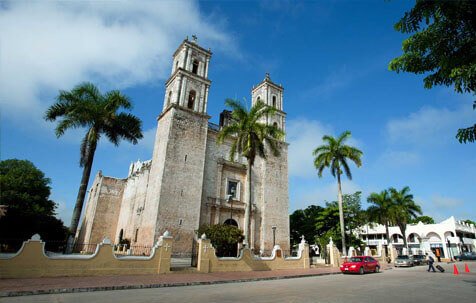THINGS TO KNOW DRIVING IN THE YUCATAN
This page at a glance:
Driving in the Yucatan is a luxury compared to other parts of Mexico. Due to tourism, new highways are springing up all over the Yucatan. What were once 2 lane pot-holed roads are beautiful freshly paved highways. Even many secondary roads are in good shape.
As far as actually driving is concerned, if you have ever driven a car in Quebec, Canada then you will have no problem driving in Mexico. The majority of Mexicans do not speed as even a minor traffic offence can lead to more hassles dealing with police. You do not find as many people driving like maniacs as you do in Canada.
DRIVING THE MEXICAN WAY
Mexican’s drive differently, many are courteous. This will be a new experience for people coming from other countries. For example, if you are driving along and encounter a slower moving vehicle you will notice that the driver will pull over to the shoulder lane and turn on their left turn signal. This is a signal for you to pass them. You pass them then turn on your right signal to say thank you.
If you are driving and the person behind you puts on their turn signal and does not do anything that person is letting you know that they want to pass you.
If someone in the oncoming lane flashes their lights at you it means that there is a problem up ahead and you should be aware of this and slow down or proceed with caution.
BUY MEXICAN AUTO INSURANCE
Your home/car insurance policy and 10 pesos will get you a cup of coffee in Mexico, that’s it. You MUST have Mexican auto insurance.
Do NOT trust auto insurance coverage offered by your credit card unless you have it verified in writing that you are covered driving in Mexico.
When purchasing insurance your coverage SHOULD INCLUDE claims adjusters that will come to the scene of an accident and an attorney. You are not allowed to move your vehicle and the police may detain you in the event that anyone is hurt until fault can be established.
If a traffic accident does occur, the police may impound your vehicle, especially if there is no one there to help you defend your rights such as an insurance adjuster and/or an attorney.
In the event that someone is injured and you are found responsible, you might not only be held liable for that person’s medical expenses but also for financially supporting them and their dependents until theyrecover. Save your self the aggravation and buy the insurance.
GUNS AND AMMO
If you carry a weapon or even a bullet or spent cartridge into or in Mexico and a Mexican official finds this they will hassle you big-time.
Comment from a reader…
The law was CHANGED around the time that the signs went up at the borders. FIRST OFFENSE, if there is only one gun involved, with a bore of not greater than .38 caliber, or ammo not exceeding .38 caliber, the punishment is as follows:
1- A fine of up to seven-hundred dollars.
2- Deportation from Mexico.
“Officer, I have five-hundred dollars in cash, but I really don’t want to leave your beautiful country.”
PARKING
 You will quickly get the feeling that you can park anywhere you want. Do not. When you see this sign do not park. What can happen is that the police can and sometimes do take your license plates or even impound the vehicle. If it is a rental you have to pay and go through all the hassles of sorting the mess out which can totally ruin 2 days of your trip and cost you money for nothing but aggravation.
You will quickly get the feeling that you can park anywhere you want. Do not. When you see this sign do not park. What can happen is that the police can and sometimes do take your license plates or even impound the vehicle. If it is a rental you have to pay and go through all the hassles of sorting the mess out which can totally ruin 2 days of your trip and cost you money for nothing but aggravation.
SPEEDING
Yes there are speed limits in Mexico and the police do enforce them. You want to avoid all possibility of getting arrested. Even a speeding ticket can get problematic if other circumstances arise to escalate things. Speed limits are posted.
Speeding is, as a rule, easily taken care of by offering to pay the fine on the spot. If you cannot pay on the spot, one of three things will occur:
CONFRONTING POLICE
When dealing with police officers, military or any Mexican official remain calm and collected. Treat this person with the utmost respect. Be sincere and be prepared to follow all directions and answer any questions. Do not be confrontational and do not raise your voice. Remain passive at all times. You will receive no slack for being a tourist who does not know the law.
Comment from a reader…
I LIVE in a non-border area of Mexico, and let me assure you that the police, be they Transitos, Municipales, Judiciales, or Federales, are only TOO HAPPY to accept “La Mordida.” In fact, as a RULE, a police officer will approach a tourist’s vehicle with arm-extended, and after the handshake you’ll be told what you did, and at that point you can either:
1- Be polite and ask to pay the fine on the spot. You’ll be asked how much you’re willing to pay, and generally $10.00 to $20.00 will do just fine.
2- If you’re in a hurry, just smile and hand the officer a twenty. The officer will smile, shake your hand, and perhaps give you a short lecture about safe driving.
3- Be a naive gringo and ask for a ticket. The officer will turn-in your drivers license, to be held until you pay the fine.
TURNING LEFT OFF A HIGHWAY
- On highway 307 running along the coast, you will find that in many places where it is 4 lanes [2 lanes in both directions], that the highway will turn from 2 lanes going in your direction to 3 lanes or the highway will go from 1 lane to 2 lanes in your direction [if it is a 2 lane section]. To make a left hand turn off the highway you pull over to the right hand lane and stop. Cars will continue to pass you on the inside lane. When the traffic is clear you make your turn. These are generally found at the entrances of resorts along the Riviera.
- In cities there is often a protected left turn lane and a “green arrow light”. You can only turn left when the light is green.
- If there is not a green light arrow then turn when safe.
- On some roads you must exit to the right on to a lateral (side) road and then turn left, across oncoming traffic when it is safe.
PASSING VEHICLES
Described above is the means in which Mexicans communicate with each other while implementing a pass however what is not mentioned is that Mexicans do not like to wait behind slower vehicles. Mexicans will pass in conditions that would give you a heart attack. They will pass 3 cars abreast. They will pass with on-coming traffic being forced over to their shoulder. You can be in a line of 6 vehicles and the last 2 cars will attempt to pass the other 4 at the same time then jockey for position as they attempt to pass each other.
You have to be prepared for this and you will know exactly what we are talking about 10 minutes after driving on the highway. Always check your mirrors to make sure there isn’t a cavalcade of cars and trucks flying up on your left side just as you pull out to pass. This is about the only real radical thing that Mexican driver’s seem to do in the Yucatan.
It is now a federal law that on Mexican federal highways you must keep to the right except to pass. This applies to all types of vehicles.
TOPES [SPEED-BUMPS]
![]() The old logo for TravelYucatan.com is a “topes”. These are everywhere, even on main highways. If you drive in the Yucatan you will eventually hit one. Sometimes there is a sign warning you, sometimes there is not. The rule of thumb is that whenever you approach a small village or even a few houses you will find topes. They come in all shapes and sizes and Mexico surely must be the leading authority on speed bumps. One quickly gets the idea that there must be some kind of conspiracy between mechanics and speed-bump installers.
The old logo for TravelYucatan.com is a “topes”. These are everywhere, even on main highways. If you drive in the Yucatan you will eventually hit one. Sometimes there is a sign warning you, sometimes there is not. The rule of thumb is that whenever you approach a small village or even a few houses you will find topes. They come in all shapes and sizes and Mexico surely must be the leading authority on speed bumps. One quickly gets the idea that there must be some kind of conspiracy between mechanics and speed-bump installers.
If you rent a standard vehicle be prepared to do a lot of shifting. If you are not in good shape then you will get a sore arm and shoulder after a couple of days so you might want to consider renting an automatic instead of a standard if you need a car for more than a day.
GAS STATIONS
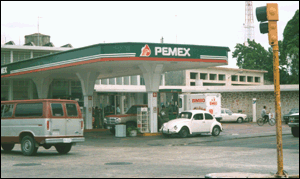 Pemex is the Mexican government’s monopoly gasoline and diesel fuel chain. There are two grades of gasoline currently available in Mexico – Magna Sin (unleaded) at 87 octane and Premium Magna Sin at 89 octane.
Pemex is the Mexican government’s monopoly gasoline and diesel fuel chain. There are two grades of gasoline currently available in Mexico – Magna Sin (unleaded) at 87 octane and Premium Magna Sin at 89 octane.
Gas prices vary all over Mexico.
Gasoline prices are significantly lower in border cities such as Tijuans, Mexicali, Nogalis, etc., when prices on the U.S. side are lower than the normal prices in Mexico. This is done to discourage Mexicans with border-crossing cards or visas from driving into the United States to buy the cheaper gasoline.
Gasoline is also less expensive in the state of Quintana Roo [Cancun – Mayan Riviera] because of 5% less tax.
Since early 2008 most Pemex stations in the more populated areas of Mexico have been accepting Visa and MasterCard. However it’s wise to ask first, because some stations (especially in rural areas) do not yet accept credit cards, or their card readers may not be functioning due to network problems.
Pemex stations accept U.S. currency.
The rule of thumb is when ever you see a gas station, fill-up. Do not enter the jungle with half a tank of gas unless you know exactly where you are going.
If you stick to main highways you will encounter frequent gas stations. Sometimes the station will not have any gas [usually around Merida or the Chiapas]. There will usually be something telling you not to bother driving in. No cars is generally a good indication that there is no gas.
All gas stations have attendants. Every gas station we have ever been in has a small convenience store and you will usually find someone who speaks English if you need help or directions. Some gas stations are quite popular with the locals and is a sort of hangout. At these stations expect many peddlers. There will sometimes be a pretty young girl who will have an old blind or crippled lady with her asking for money. Hand them a few pesos which you can be assured will go to the care and feeding of their family who may be undergoing difficulties beyond your imagination.
GAS STATIONS
Gas station guys do this all over the world so this is not something only in Mexico. In fact it has never happened to us however there is always a first time and we always tell the guy exactly how many pesos to fill up. The scam is that if you say “fill er up” they can start pumping the gas without resetting the pump and have the previous sale still rung up. This means that you pay for what was already on the pumps plus your gas. There is nothing you can do and if you refuse to pay you will get arrested by the police unless you can prove what transpired.
When you pull up to the pumps let the guy see that you are watching him.
Comment from a reader…
In my example, I paid US Dollars; A $10 and a $1. I gave the attendant the money and turned around to get in my car (I got out because the attendant started pumping from the other side of the pump!) He then got my attention and when I turned, he didn’t say anything. He was just standing there with two $1’s in his hand. Of course he was waiting for me to point out that I gave him 2 $1’s instead of the $10 and $1. I told him no and got in my car with no opposition. It’s perfect from their end because he never asked for more money therefore no scam. He was waiting for me to pull out the $10 bill which he would gladly accept as a tip!
When paying, hold the money up and announce what it is as you are giving it to the attendant, one bill at a time. Also make sure you still have your gas cap!
PRIVATE GAS STATIONS
If you are desperately in need of gas there are many “local” gas stations, which is a guy with a barrel of gas. What you do is drive into the nearest village or enclave of houses and ask for gas. Someone will tell you how and where to find it. If you have to, pay someone to take you to the gas guy. The guy will fill up a small gas-can and then put that in your vehicle and charge you. Obviously you need CASH and if you do not have any then be prepared to trade your Rolex for $10 worth of gas.
One night we got lost in the jungle and ran out of gas. We were in the middle of nowhere and had not seen a sign or even a house for miles. This experience was terrifying. Below is a picture of the guys who saved our miserable hides.
BATHROOMS
Driving the highways in the Yucatan is nothing like driving the U.S. Interstates or TransCanada Highway. For starters there are no fast-food restaurants or gas stations every 15 minutes. There are also NO public rest stops. The closest thing is a Pemex gas station. There you will find clean bathrooms usually with toilet paper and toilet seats. Besides this you can try the local restaurant at any pueblo you happen to be passing by or simply stop at the side of the road. You should by habit always carry you’re own TP.
Sometimes at Pemex you have to pay to use the bathroom. If you do not have any loose change simply walk by the attendant, do your thing then walk out. If the attendant says anything to you just mumble and keep walking…no harm done.
TRAVELING AT NIGHT
Driving at night in the Yucatan is generally no more dangerous than driving where you live at night. If you stick to highway 307 along the Riviera or any major highway in Merida you will be safe. In fact there are much more dangerous roads and highways in Canada and I have never heard anyone say not to drive at night in Canada.
Of course if you drive into the jungle, the Chiapas or into Guatemala at night you do run the risk of placing yourself in harms way. It is easy to get lost and run out of gas. There is also a high likelihood of hitting something since there are no street lights once you leave a town and there are white tailed deer, which jump right out in front of your car.
Some species of animals migrate across certain highways and roads during certain times of the year and the surface of the road can become slippery from road-kill. At night the feeling of driving over living things is unnerving.
The reason quite often sited for not driving at night is because of banditos who use cleaver means to rob you. The fact is that you are just as easy a target in broad daylight as you are at night. In fact from a bandits perspective daytime is better.
We try to avoid driving at night but we have many times, all over the Yucatan without incident.
LIVESTOCK AND THINGS ON THE ROAD
Mexico is nothing like Cuba where you can basically drive anything that moves. In Mexico there are numerous laws governing vehicles. However you will still see horse drawn carriages and farm wagons. You may even pass cowboys on horses riding down a highway. You may also encounter animals like cows, sheep, horses, turkeys and lots of dogs.
NOTE: If you are driving on private land and hit a cow/goat you have to pay the farmer for the animal.
RIGHT OF WAY
You’re a tourist in a VW bug. Don’t push you’re luck against a Mexican truck driver. The best thing to do is always yield to the other driver and avoids any hassles!
Unlike in the United States, Canada, and parts of Europe, there is no right-of-way in Mexico, and this includes PEDESTRIANS. When you cross the street look in all directions, because you’re on your own.
LIBREMIENTO
When approaching a town of any size you will often see two arrows. One indicates “libremiento” and one indicates “centro.” The libremiento bypasses around the center of town and all the big trucks and buses will be on it. In many small towns, especially in Colonial Mexico, the central streets are hundreds of years old and were built for burro traffic. You can easily get stuck and backing up can be a nightmare especially if you are in a minivan or worse, an RV.
ONE WAY STREETS
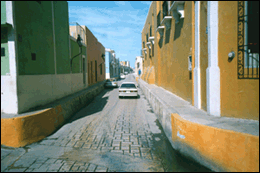 In some small towns there is a system of one way streets that grid the town.
In some small towns there is a system of one way streets that grid the town.
Your map will not list these streets and you can easily get lost or worse go down a one way street and hit something.
The way you know you are entering a one way street is through stop signs, which have arrows, indicating which way you can go at the stop sign.
An arrow pointing to the right means you must go right or straight.
An arrow pointing to the left and right means the street ahead is one-way, do not enter.
If the sign has no arrows then you can go in any direction. See signs for more details.
MECHANICS IN MEXICO
If you take a late model VW bug into Mexico and have a break-down, no problem. If you are in a brand new BMW and need help, good luck. Of course you will find help in Mexico City but by the time you’re up in the Yucatan you’re in no-mans-land. Parts have to be shipped there and your average mechanic, as skilled as he may be, may not have any experience on your car, or any manuals to guide him.
If you’re renting a vehicle you do not have to worry. If you’re taking in your own car/truck then make sure it is in good condition for the drive because if you need repairs this could be a problem.
GETTING LOST
If you rent a car and decide to simply drive throughout the jungle getting from one ruin site to another then you will get lost. You will probably get lost a number of times. This can be a fun experience however when it happens at night and you run out of gas it can be a different kind of experience. Follow these tips and you should not have any problems:
REMEMBER: The Yucatan is by and large a safe place. If you get lost or run out of gas remain calm. Ask a local for help and you will be surprised by the generosity and caring of even the poorest farmer. When you are traveling around the countryside you are amongst hard working honest rural people. The crime you hear about in Mexico is located in Mexico City and the U.S. boarder areas.


